In a photoelectric emission, electrons are ejected from metals X and Y by light of frequency f. The potential difference V required to stop the electrons is measured for various frequencies.. If Y has a greater work function than X, which graph illustrates the expected results?
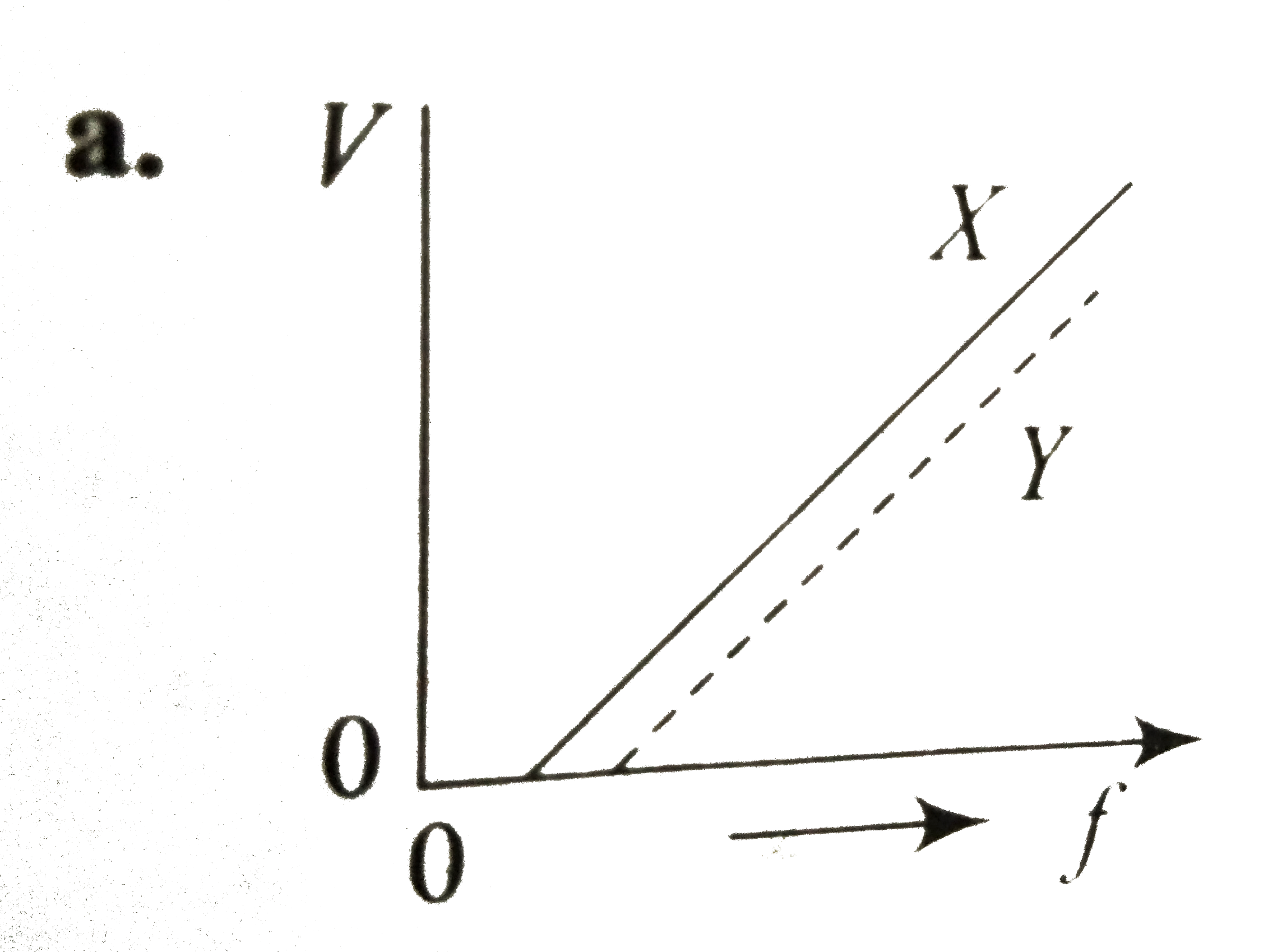
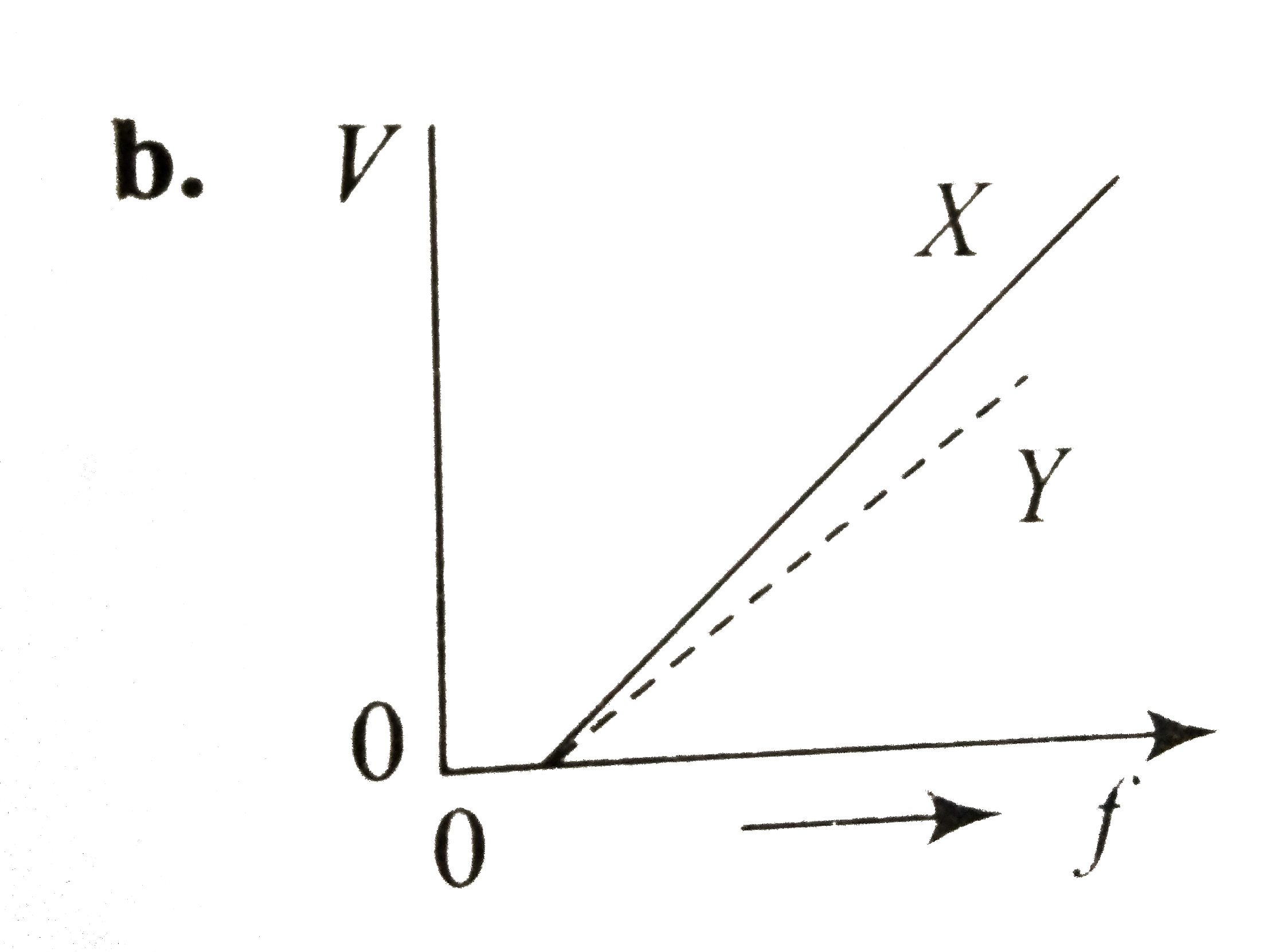
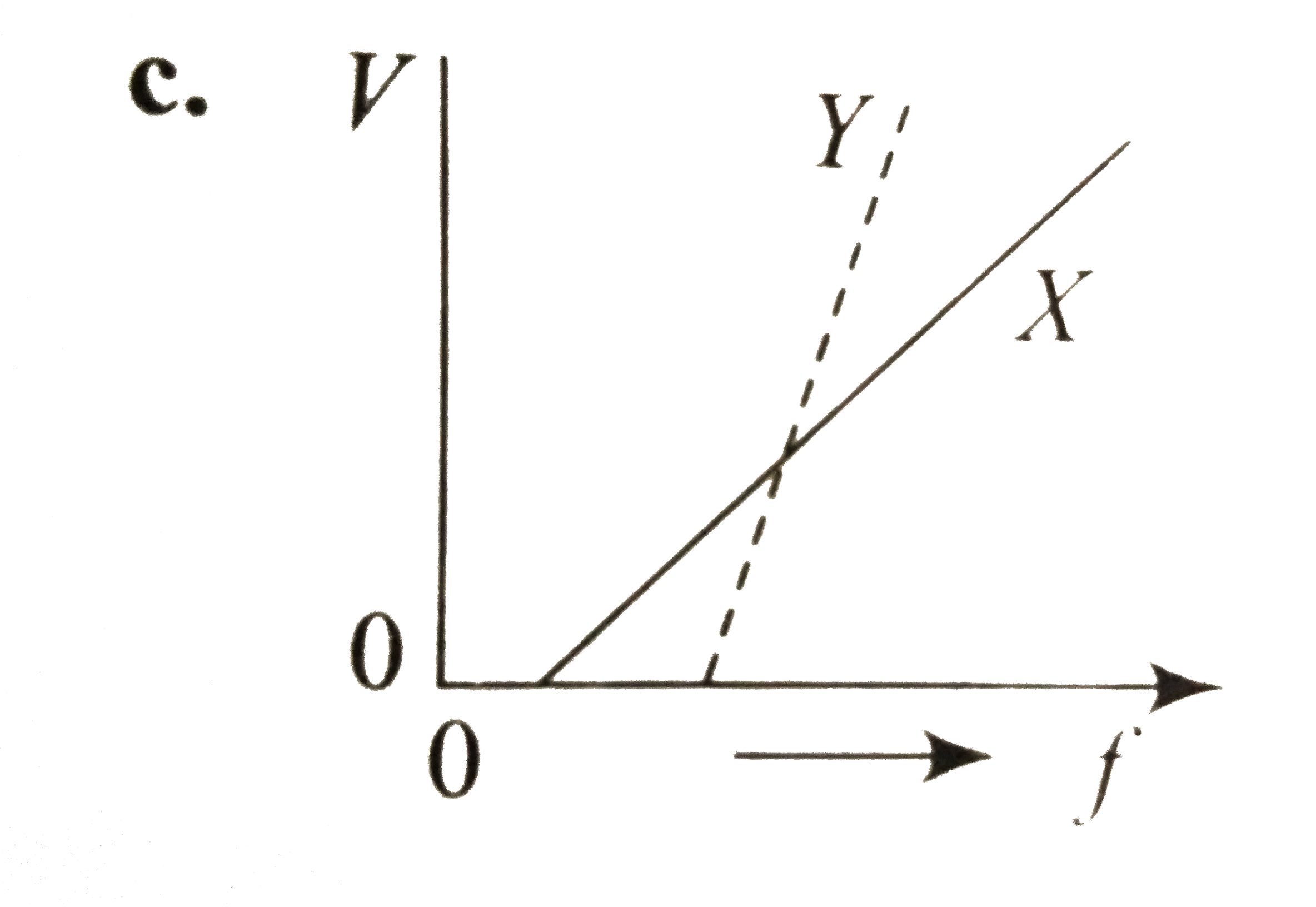
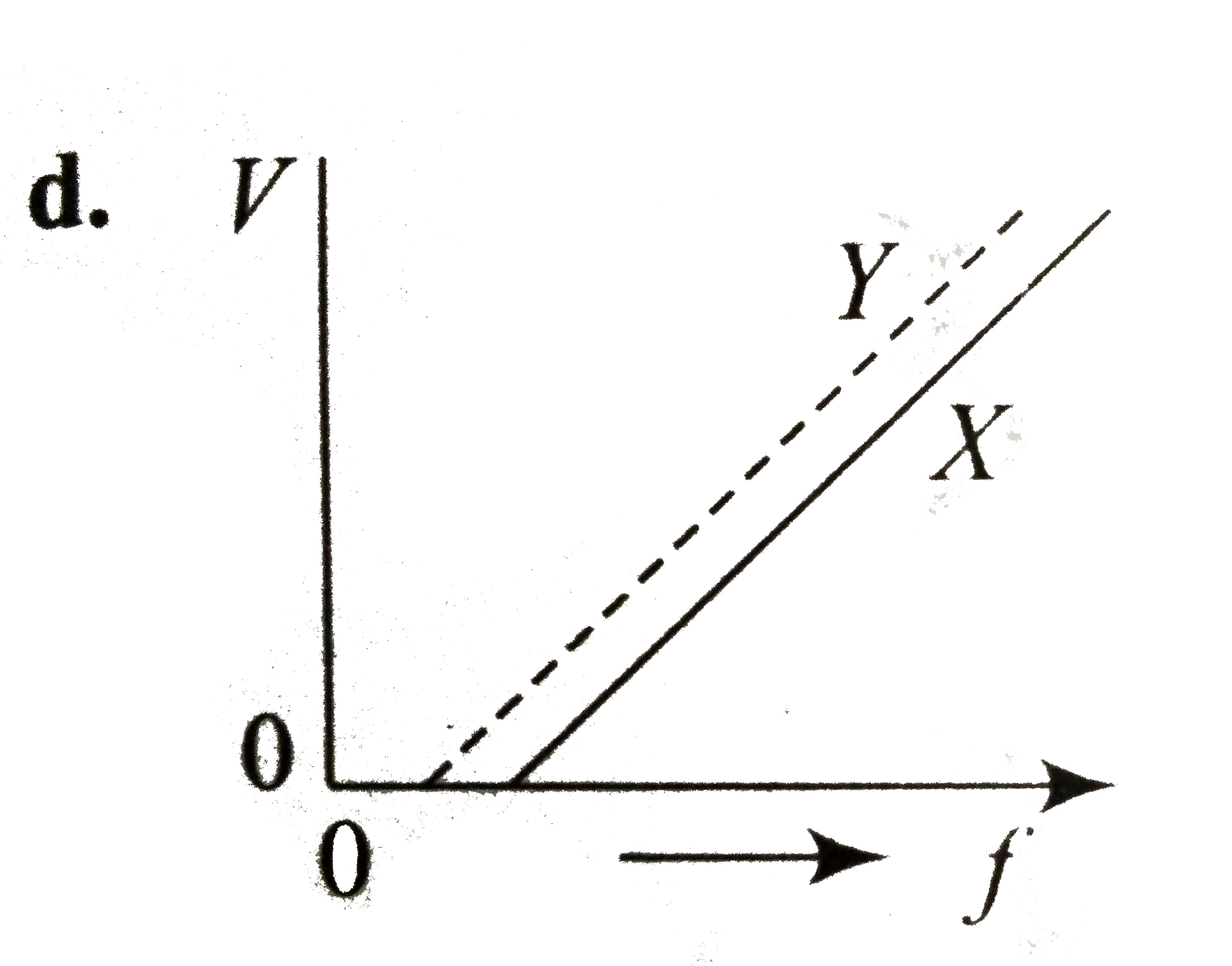
The correct Answer is:A
V versus F has a constant slope of he, so both lines must be parallel.
Also, work function is equal to intercept on f-axis
Topper's Solved these Questions
- PHOTOELECTRIC EFFECTBook:CENGAGE PHYSICSChapter:PHOTOELECTRIC EFFECTExercise:Multiple Correct
Explore 10 Videos
- PHOTOELECTRIC EFFECTBook:CENGAGE PHYSICSChapter:PHOTOELECTRIC EFFECTExercise:Linked Comprehension
Explore 44 Videos
- PHOTOELECTRIC EFFECTBook:CENGAGE PHYSICSChapter:PHOTOELECTRIC EFFECTExercise:Subjective
Explore 16 Videos
- NUCLEIBook:CENGAGE PHYSICSChapter:NUCLEIExercise:QUESTION BANK
Explore 59 Videos
- RAY OPTICSBook:CENGAGE PHYSICSChapter:RAY OPTICSExercise:DPP 1.6
Explore 12 Videos
Similar Questions
Knowledge Check
In photoelectric emission process from a metal of work function 1.8eV , the kinetic energy of most energetic electrons is 0.5eV. The corresponding stopping potential is
A1.3VB0.5VC2.3VD1.8VWhen a metal surface is illuminated by a monochromatic light of wave-length λ, then the potential difference required to stop the ejection of electrons is 3V. When the same surface is illuminated by the light of wavelength 2λ, then the potential difference required to stop the ejection of electrons is V. Then for photoelectric effect, the threshold wavelength for the metal surface will be
A6λB4λ/3C4λD8λThe stopping potential as a function of the frequency of the incident radiation is plotted for two different photoelectric surfaces A and B . The graphs show that work function of A is
 AGreater than that of BBSmaller than that of BCEqual to that of BDNo inference can be drawn about their work functions from the given graphs
AGreater than that of BBSmaller than that of BCEqual to that of BDNo inference can be drawn about their work functions from the given graphs
In a photoelectric effect experiment, the graph between the stopping potential (V) and frequency (v) of the incident radiations on two different metal plates P and Q are shown in plates, P and Q has greater value of work function ? (ii) What does the slope of the lines depict?

View SolutionWhat is the work function of a metal if light of minimum frequency 8×1013Hz is required for emission of photo electrons?
View SolutionIn the study of a photoelectric effect the graph between the stopping potential V and frequency v of the incident radiation on two different metals P and Q is shown in fig.
(i) which one of two metals have higher threshold frequency
(ii) Determine the work function of the metal which has greater value
(iii) Find the maximum kinetic energy of electron emitted by light of frequency 8×1014Hz for this metal.
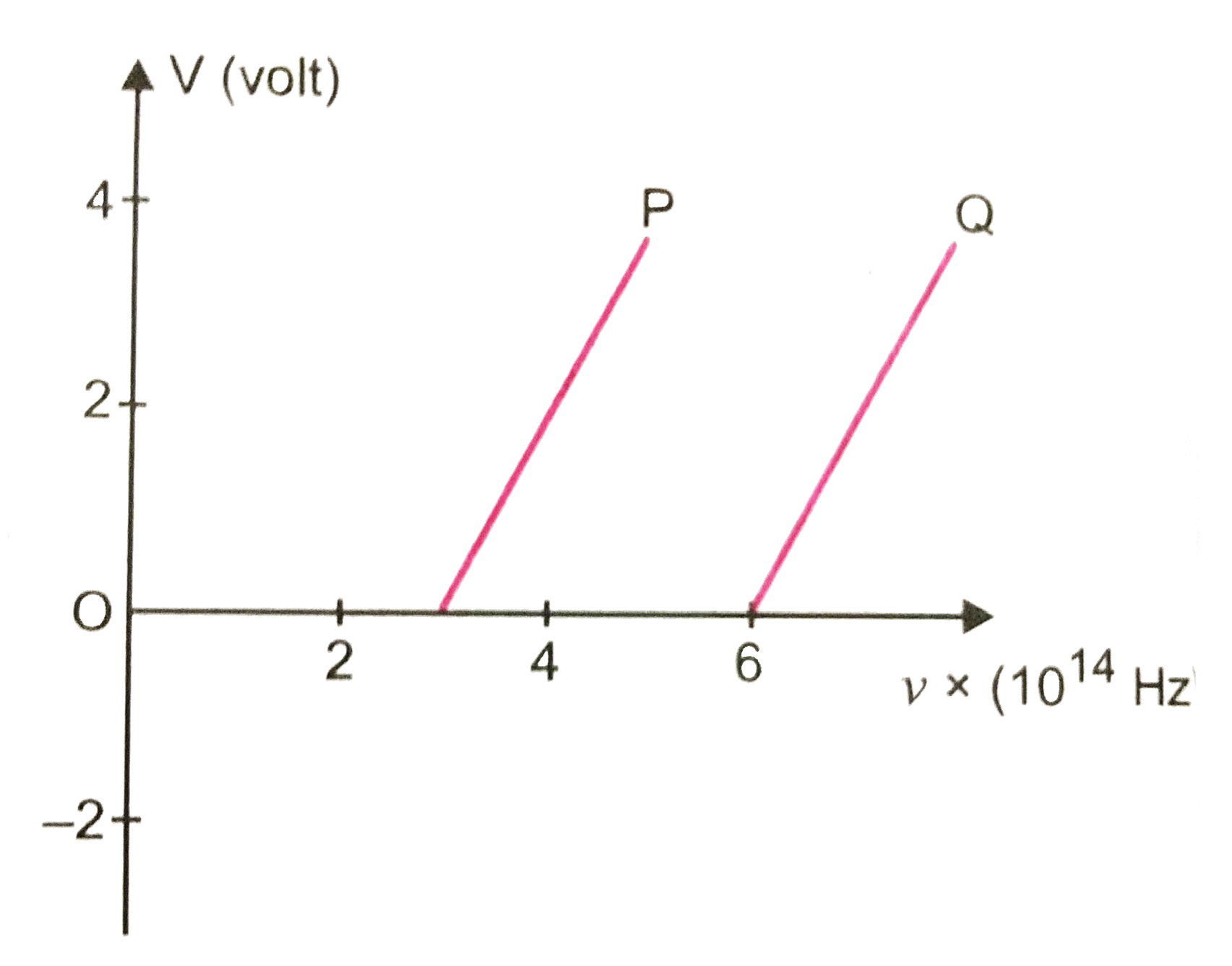
View SolutionThe threshold wavelength for the ejection of electron from metal is 330 nm, then work function for the photoelectric emission is
View SolutionA metal surface of work function 1.07eV is irradiated with light of wavelength 332nm. The retarding potential required to stop the escape of photo - electrons is
View Solution

